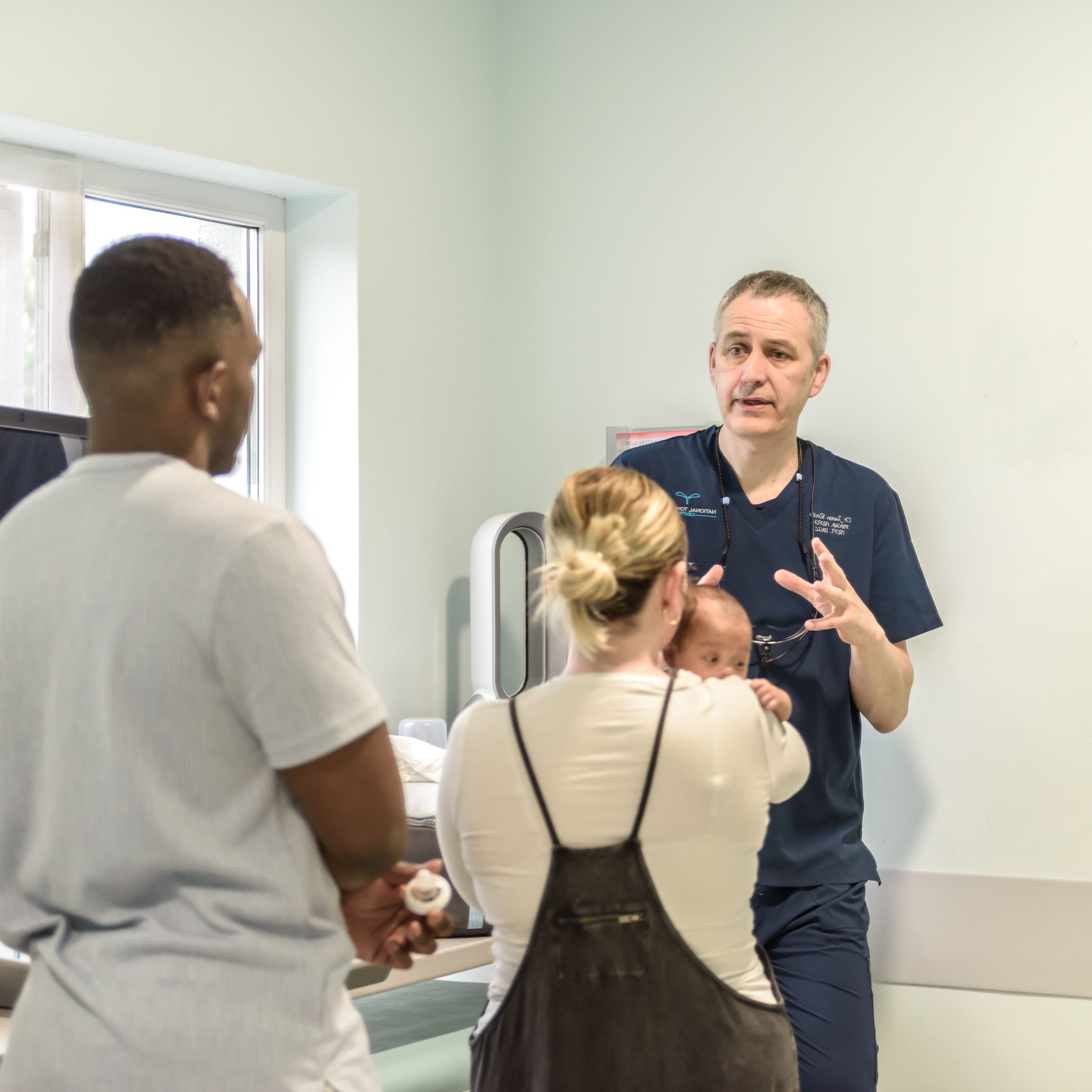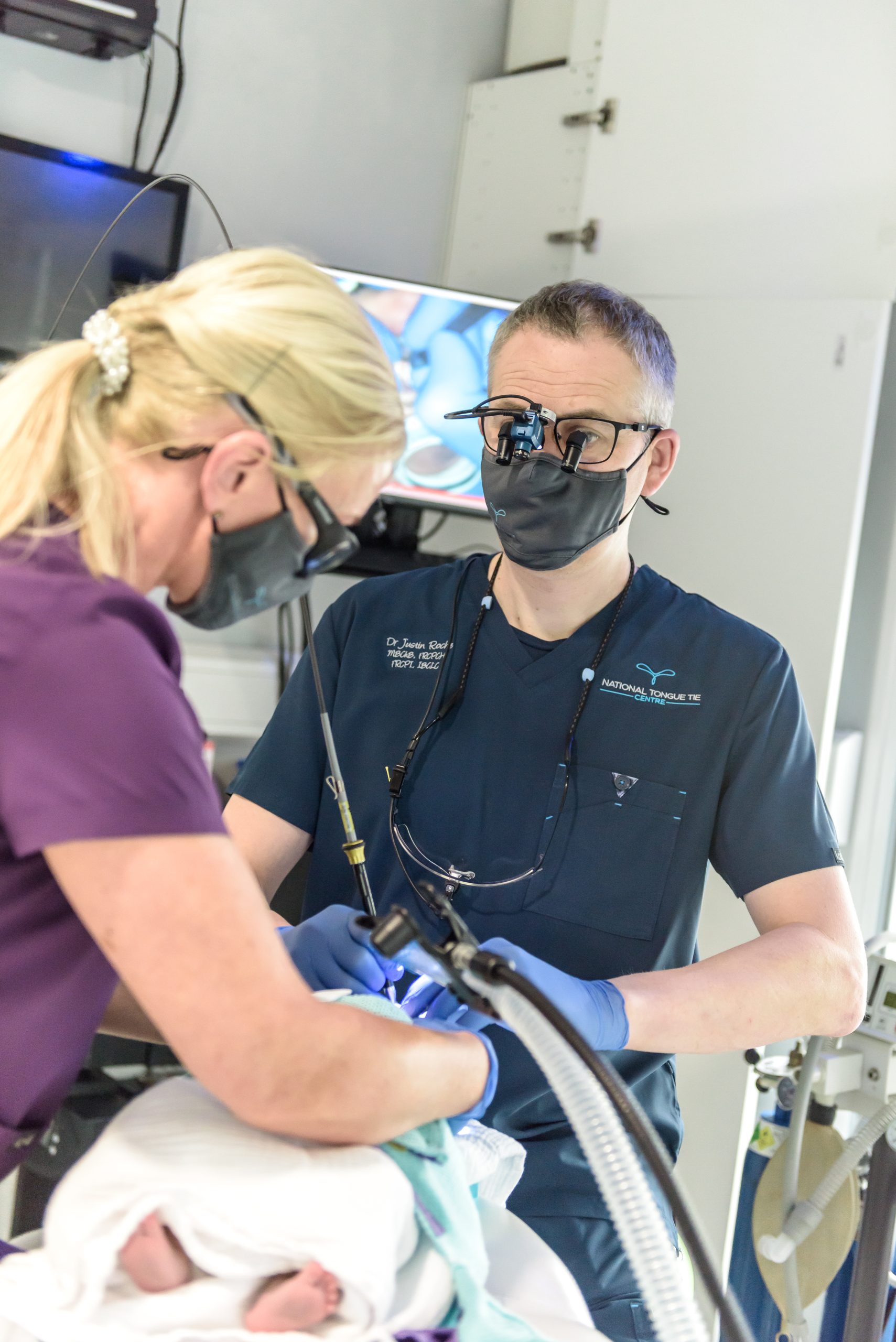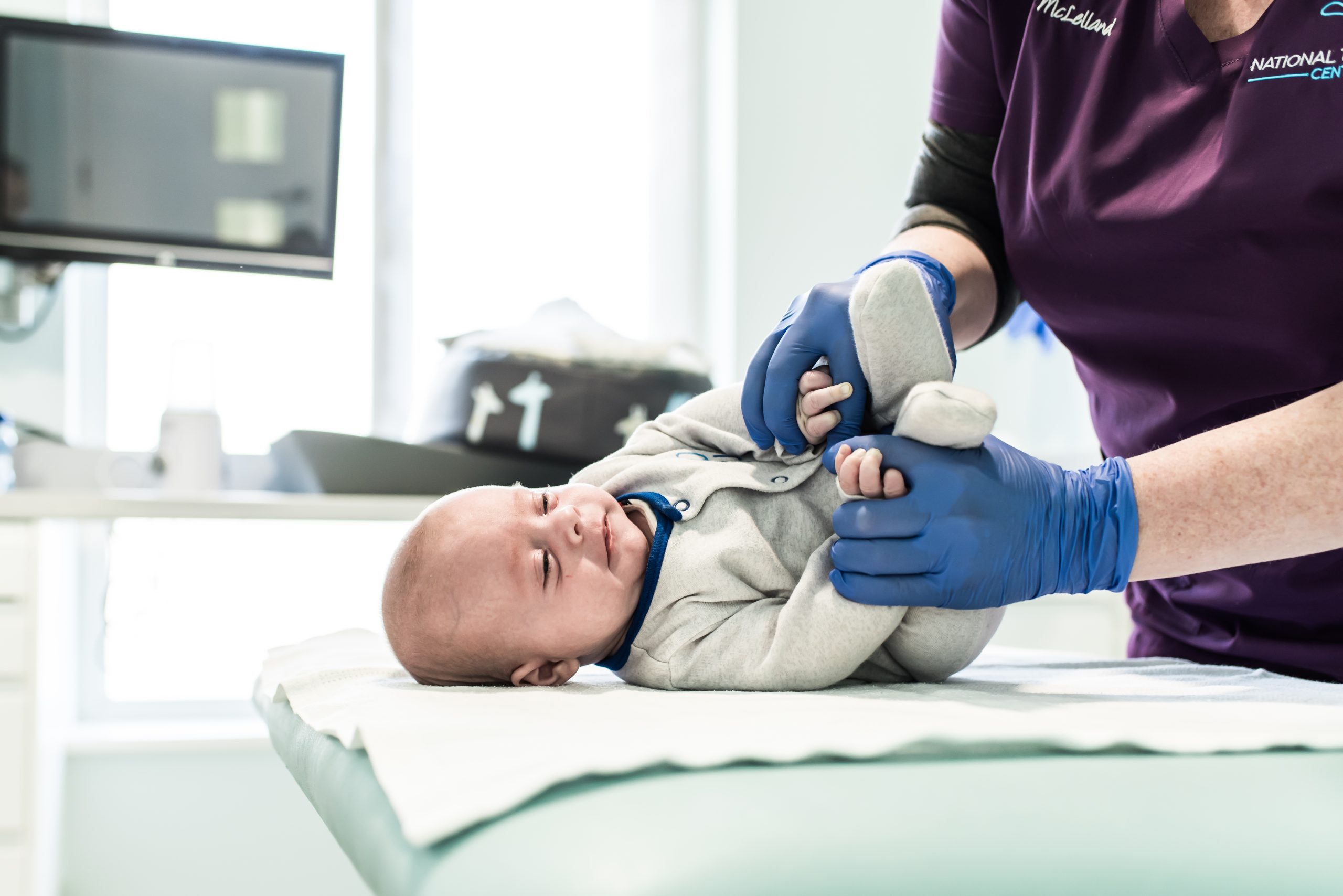We do things differently in our clinic compared to other services for babies with tongue tie. We do not offer surgery on a first appointment as we do not believe that this is in the best interest of your baby, nor is it in keeping with international best practice for the treatment of tongue tie.
A baby who has a tongue tie will have had to adapt to this structural restriction from before they were born. They will therefore have developed compensations to feed which in turn causes tension patterns in their body; for example, you may have noticed they turn their head one way more than the other or they tend to keep their hands fisted a lot of the time.
To help your baby transition to a normal feeding pattern, using the muscles in the way they were intended and to build up sufficient stamina, is going to take time and help from you. We therefore need to show you how to do this, and your baby will find this process following surgery much easier if they are prepared ahead of time.
Your baby may only be a few days or weeks old and have only struggled with feeding for a short time. However we want to ensure that they have the best oral function for the long term, so we need to ensure that they have the best outcome from their surgery. This means looking at both structure and function and considering the effects these have had on the whole body.


One of our feeding specialists, International Board Certified Lactation Consultants (IBCLC), will assess how your baby is feeding to review how their function is. They will be looking at whether your baby is moving their tongue to create suction to extract milk. Alternatively, they may be using tongue or lip compression/tongue thrusting or jaw dropping to achieve milk transfer. They will also observe how your baby paces themselves when feeding. They will assess latch and position and suggest changes to optimise this if you are breastfeeding. If you are bottle feeding they may suggest a change in bottle type and/or flow rate.
We will examine your baby and then discuss the findings of both this and the feeding assessment. A recommended treatment plan will be drawn up to best prepare for surgery (frenectomy) if this is required. For example, this may involve mouthwork, bodywork, and changing feeding technique. Surgery will be performed on a different day once your baby has had a chance to work on some new habits and improve the muscle tone of the posterior portion of their tongue.


If your baby requires surgery this will be performed at a Surgical Appointment on a day agreed upon between you and the Doctor. At this appointment you will first meet with one of our Doctors who will answer any questions for you and discuss consent. One of our Healthcare Assistants will then bring your baby through to the procedure room. Due to laser safety guidelines, and for the best care of your baby, parents remain in their consultation room. Your baby will be swaddled and laser safety goggles put on them. The Doctor will use some local anaesthetic gel to numb the area to be treated and then the tie(s) will be released using a CO2 laser. Babies sometimes dislike being swaddled but they usually relax during the procedure and are settled when they return to you. The time away from you is about 10 minutes.
Your baby can feed after the procedure and we will assist you with this. If you are breastfeeding, you will have an IBCLC help you and review latch and position again. If you are bottle feeding, we may suggest trying a different bottle and we have a range here in the clinic to find the one that is going to work best for your baby to optimise their oral function. We will also help you formulate a feeding plan for the coming days through the recovery period.


If your baby has a frenectomy you will also be booked for a follow-up appointment that involves feeding support and a review of the surgical site (Diamond check).
With the use of a CO2 laser, there is usually little to no bleeding.
Rarely, because of an aberrant blood vessel near the frenulum, we can get a more significant bleed. If this occurs we control the bleeding with one or two absorbable sutures which do not affect the healing of the surgical site. We do not use silver nitrate to control bleeding, which is often the first line of choice, as this can cause a chemical burn.
The greatest complication is reattachment or sub-optimal healing which is why we have an aftercare program in place.


To achieve the best result from a tongue tie release we need to follow an aftercare programme. To optimise the healing of the surgical site, as well as change how your baby sucks, we need to teach an optimal resting posture of the tongue, retrain normal movement patterns and teach you some massage to ensure we don’t have any reattachment of the released tissues. A member of our team will go through all this with you, including some bodywork exercises, so that you are confident in the care you are providing at home.
Copyright – National Tongue Tie Centre 2024